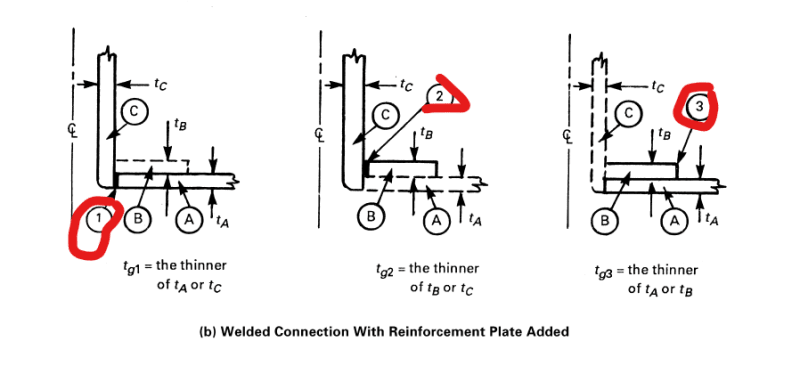YuJie_PV
Mechanical
- Jan 19, 2017
- 147
hi,all,
i encounter a problem regarding to determination of MDMT per UCS-66.
it's nozzle welded into shell. the nozzle and shell are evaluated based on their governing thickness, and UCS-66 curve respectively. i am clear with it, just how to deal with the tg1,tg2,tg3 in figure UCS-66.3(b). which curve shall be selected for their calculation of MDMT for the welds? for example, in case of tg1, select nozzle's or shell's curve?
i am just confused. the base metal's MDMT is already evaluated, why still need to consider the MDMT of weld? what's the consideration behind the requirement in the Code?

Thanks in advance
i encounter a problem regarding to determination of MDMT per UCS-66.
it's nozzle welded into shell. the nozzle and shell are evaluated based on their governing thickness, and UCS-66 curve respectively. i am clear with it, just how to deal with the tg1,tg2,tg3 in figure UCS-66.3(b). which curve shall be selected for their calculation of MDMT for the welds? for example, in case of tg1, select nozzle's or shell's curve?
i am just confused. the base metal's MDMT is already evaluated, why still need to consider the MDMT of weld? what's the consideration behind the requirement in the Code?

Thanks in advance
